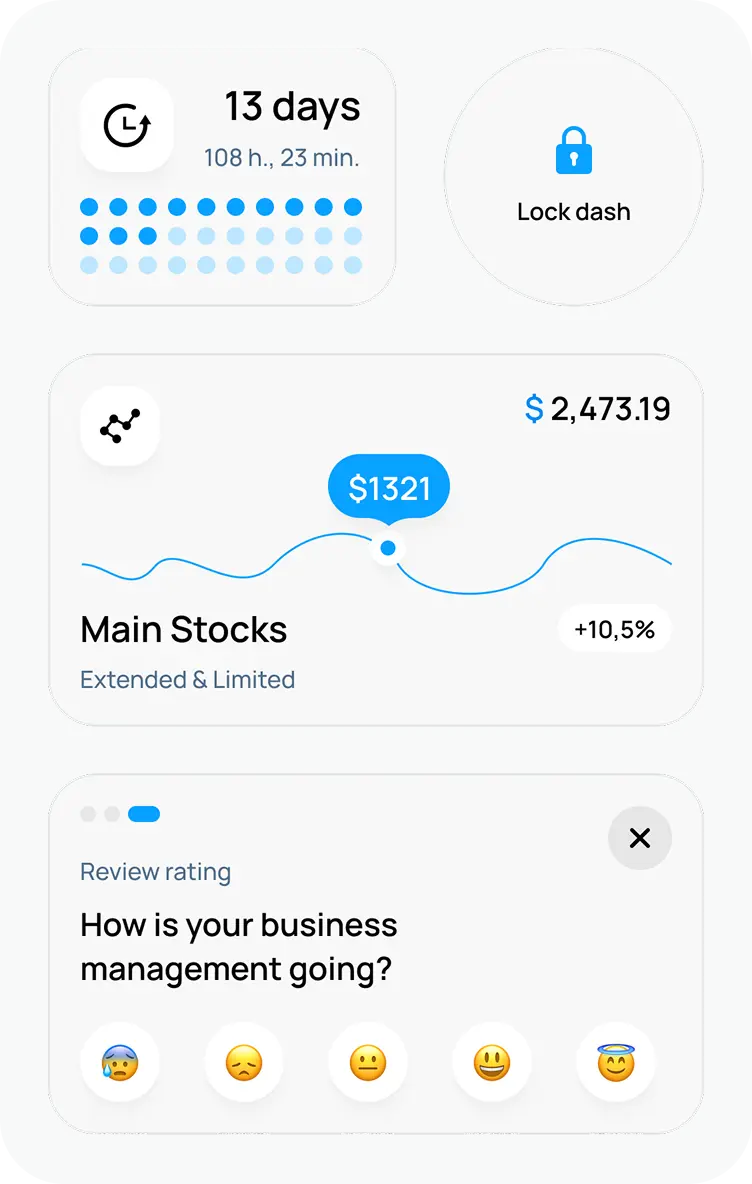React Native Limitations and How They Affect Your App
April 28, 2022•6 min read

I hope you enjoy reading this post. If you want us to do your frontend development or design, click here.
Author: Alex Vasylenko | Founder of The Frontend Company


The Frontend Company team and other developers around the world share the admiration for a cross-platform mobile app development framework, React Native (RN).
Everything is excellent, from its motto, «Learn once, write anywhere,» to the features it offers coders.
If you have ever worked with JavaScript code and ReactJS, you will be able to create a unique, user-friendly app from all aspects of UI/UX and not have to spend years learning. The simple learning curve made RN one of the top 3 cross-platform mobile frameworks.
Despite the many benefits and options for creating native-like applications for iOS and Android, React Native has some limitations.
Today, I will show you a list of React Native downsides that you probably won't know until getting started with this technology.
A little history of React Native
The cross-platform framework React Native comes to light almost two years after presenting the first version of React. The developer of this tool is Meta Platforms (ex-Facebook, Inc.). The release of RN was at the end of March 2015.
Since its development, the technology has helped developers achieve one goal: to develop native apps for multiple platforms at once. While using this tool, coders have been able to build projects for iOS and Android, Android TV, macOS, Apple tvOS, and several other operating systems.
📝 Note: Although the creators and programmers call RN a mobile development tool for native applications, it is not entirely true. This framework only helps model native-like components, which gives the impression of using a native mobile app.
Another reason for the popularity of RN is the high stability of the projects developed with this mobile framework. The technology engine is written based on JavaScript and TypeScript, due to which React Native built applications function faster, and programmers can use TypeScript to solve unusual issues.
Now that you know a little about the pros of RN, we can move on to the React Native limitations list.
What can React Native not do? The list of React Native limitations
Currently, about 2270 well-known global companies use React Native. It is an impressive number, proving the incredible demand for this tool among coders and firms. Furthermore, RN-loyal firms are involved in a wide variety of industries:
e-commerce;
IT;
social media;
fintech;
retail;
media;
entertainment and more.
Among the devotees of React Native, besides Facebook and Instagram, there are also giant companies like Walmart, Shopify, Bloomberg, and Pinterest. Still, despite this loyalty and demand, React Native has limitations that can become roadblocks for your business and show themselves only when development is started.
📝 Note: Here, we have focused on limitations of React Native from the developers' and business' points of view. It will allow you to create the most unbiased picture possible.
Limitation #1. The cross-platform concept does not work the way you imagine
Theoretically, a cross-platform mobile framework should let developers write less code and get an application suitable for multiple platforms. It's not that easy.
Every operating system has its specifics, and you can't do without customization of certain components, UI behaviors, or functionalities. Yes, programmers will indeed have to deal with less source code. However, React Native often will not allow using the same pieces of code for different operating systems like iOS and Android.
So one of the biggest React Native limitations is it might not provide out-of-the-box support for everything, and it doesn't always deliver true "write once, run everywhere" functionality as many might expect.
Therefore, companies must use native devs' assistance when creating large mobile apps with extra complex functionality or unusual solutions. Consulting a native programmer will help prevent mistakes and long-lasting bug fixes.
Limitation #2. Too flexible structure is often a hindrance in the mobile project development
React Native gives coders flexibility, unlike frameworks with stricter structures like Angular. On the one hand, it allows the implementation of incredible design and functionality, but on the other hand, this freedom increases the likelihood of inconsistencies and technical challenges.
While React Native is accessible to JavaScript developers, mastering its structure and best practices requires high JavaScript skills. Without it, it would be challenging to understand the philosophy of React Native and use all its features effectively.
Limitation #3. React Native has no official frameworks for testing
The absence of a proper testing solution from the official team is also one of React Native drawbacks. If a developer's list of tools does not include a good third-party tool, they must spend extra time searching for a reliable testing solution that works well with React Native.

Transform your UI for peak performance!
🔹
Unlock seamless, high-performance frontend solutions tailored to your business.
🔹
Get an interface that outshines competitors and delights your users.
Limitation #4. Specific React Native limitations for the abstract layer increase the dependence on other libraries
React Native doesn't create native apps directly. It builds native-like apps by adding an abstract layer on top of the native mobile platforms (iOS and Android). This means that React Native components interact with native code through this layer rather than directly.
If a specialist misses a bug in the abstract layer, errors and warnings will appear throughout the mobile application. You will be lucky if they are insignificant, and the programmer can easily detect them and then fix them as fast as possible. Small bugs might be easy to identify and fix, but more significant issues can lead to major headaches for developers.
For most experts, the solution to such React Native disadvantages is other third-party libraries. They help specialists keep apps up to date with OS changes and set things up to allow changes to be made without affecting the source code in general.
The main thing is to ensure that the tools are safe and do not compromise users. If a developer chooses third-party solutions, he must test them to avoid compromising the app's security or functionality.
Limitation #5. The RN-created application has a bigger size than the native one
Despite the name of the framework, you have to accept the relatively big size of the developed applications. Due to the way React Native works, apps built with it tend to have a bigger file size compared to those developed natively in Swift (iOS) or Kotlin/Java (Android).
Why does this happen? – Unlike native apps, React Native applications include additional components, such as:
The JavaScript runtime to execute the code.
Various bridges and dependencies to enable communication between JS and native modules.
Additional frameworks and libraries for cross-platform compatibility.
This point does not apply to the critical React Native limitations because the performance or user experience of the project is not affected by the size. This feature should be considered rather than put at the forefront of everything.
Limitation #6. No support for multiprocessing (parallel threading)
The list of React Native cons also includes zero support for multiprocessing. Since this cross-platform mobile framework only supports a single-threaded JavaScript execution model, the user cannot perform multiple tasks at the same time.
It is a specific feature of the tool itself, which supports a single-threaded JS (JavaScript) structure. This is why some people mistakenly believe RN-based apps are low-performance because of this limitation, although this is not true. Users just can't simultaneously perform certain tasks, such as chatting while watching a video on the same app. The functionality of the application itself does not suffer in any way.
This React Native limitation doesn't degrade app performance but limits multitasking capabilities, which can be a drawback for some applications.
Limitation #7. Lack of modules and smooth navigation
I decided to combine these two React Native limitations into one block for your clarity. In the case of modules, everything is easy. Developers believe that custom modules will be enough to develop hybrid mobile applications. Such a rule doesn't work for all cases, especially for apps requiring unique or highly specific functionalities. In extreme cases, some developers even modify or hack existing modules to make them work for their needs.
As for navigation, React Native has a hot reload feature. It is a great option, allowing you to make code changes without rebuilding the entire project. Sometimes, this leads to difficulties with deployment or even package compatibility.
Thus, professionals may encounter some React Native hot reload limitations from time to time. Experienced programmers and a company with React experience can cope with this quickly.
Conclusion
Our team believes these are the primary and most common limitations of React Native that programmers and firms experience. Fortunately, the large React community can help professionals and businesses deal with each of the above issues quickly. Sure, it may take some time to figure out the particular problems, but these are not critical numbers.
Do you plan to develop a cross-platform mobile application and need a trusted development crew? The Frontend Company team provides React Native development service and guarantees high-quality work. You can see some examples of our work on the Case Studies page.
💡 For free consultation or more details, please contact our manager, Viktoria Buchenko.

Unlock the full potential of your product

Boost customer retention & satisfaction

Become more competitive on the market

Move to the latest technologies stacks

Improve usability & visual appeal
FAQ

Alex Vasylenko is the founder of The Frontend Company, DBC and several other successful startups. A dynamic tech entrepreneur, he began his career as a frontend developer at Deloitte and Scandinavia's largest banking company. In 2023, Alex was honored as one of 'Top 10 Emerging Entrepreneurs' by USA Today.
RATE
Rate this article please
This will help us provide more useful information.
153 ratings, average 4.88 out of 5
